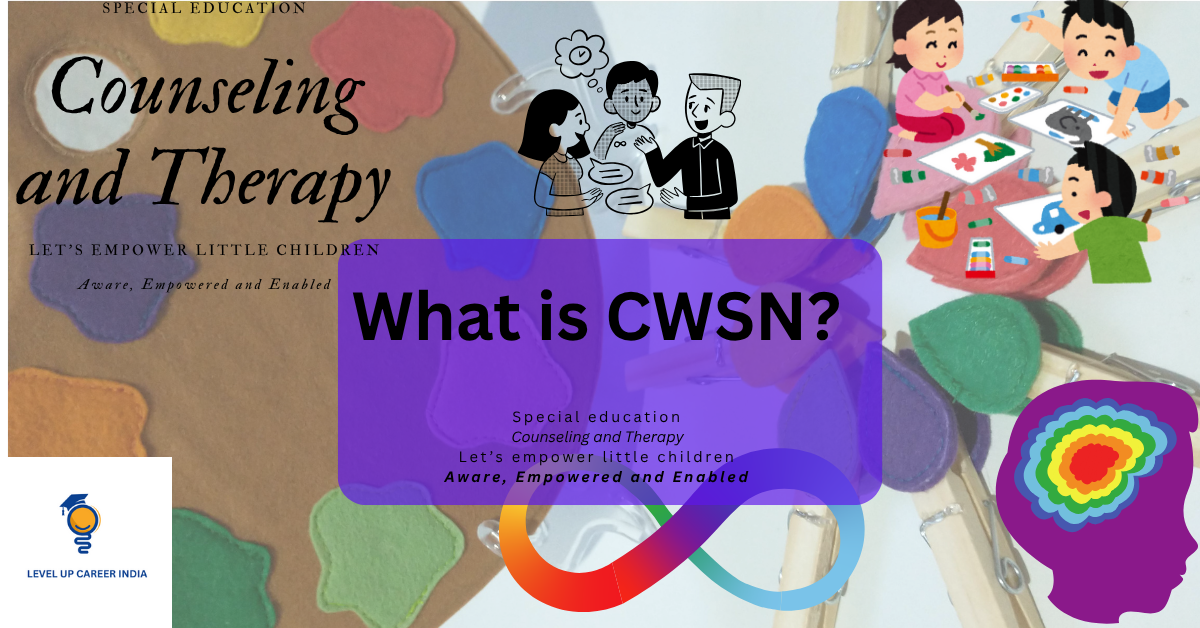What Is CWSN? Meaning, Full Form, Types, and Educational Support Explained
It is more crucial than ever to comprehend the term CWSN in a world that is shifting toward inclusive education. This post will help you understand CWSN, their needs, the law, and how schools may and should support them, regardless of whether you’re a parent, teacher, student, or education policymaker.
What Is CWSN?
CWSN stands for Children With Special Needs.
Such children require additional support from their caregivers, teachers, peer as they face a lot of challenges in their academic, physical or behavioural day to day life. there are a number of reasons like intellectual, sensory, and developmental conditions.
This phrase is a call for action and inclusivity rather than merely a label. It acknowledges that every child learns and develops differently and that the educational system should help each student reach their full potential.
Types of CWSN
Children With Special Needs can fall into various categories depending on the nature of their challenges. Here are some common classifications:
- Physical Disabilities: Mobility issues, cerebral palsy, spina bifida, etc.
- Intellectual Disabilities: Developmental delay, Down Syndrome, etc.
- Learning Disabilities: Dyslexia, dysgraphia, ADHD, etc.
- Sensory Impairments: Vision or hearing loss.
- Autism Spectrum Disorder (ASD): A neurodevelopmental condition affecting communication and behavior.
- Multiple Disabilities: A combination of two or more of the above.
Every child is different and has different requirements; some might only need little classroom modifications, while others could require more specialized interventions.
Rights and Government Norms for CWSN in India
India has taken legislative steps to ensure that children with special needs receive the education and care they deserve. Here are key laws and policies:
- RPWD Act, 2016: The Rights of Persons with Disabilities Act mandates equal rights, inclusive education, and accommodations for children with disabilities.
- RTE Act, 2009: The Right to Education Act ensures free and compulsory education for CWSN up to the age of 18.
- Samagra Shiksha Abhiyan Promotes inclusive education by providing support through special educators, aids, and accessible infrastructure.
Schools are expected to prepare Individualized Education Plans (IEPs), create inclusive classrooms, and provide the necessary tools and environment for CWSN to thrive.
Accommodations and Support in Schools
Supporting CWSN is not just about access, it’s about meaningful inclusion. Schools can do this through:
- Special Educators: Trained professionals who support both students and teachers.
- Curriculum Modifications: Simplified or alternative lesson plans suited to individual needs.
- Assistive Technology: Screen readers, hearing aids, Braille tools, etc.
- Exam Accommodations: Extra time, scribes, or alternative evaluation methods.
- Inclusive Environment: Activities that encourage participation from all students, regardless of ability.
- Shadow Teachers: For familiarizing the child with the school environemnt, and to enable them through the classroom instructions.
Should You Get a Child Officially Labeled as CWSN?
This is a question many parents struggle with. Let’s look at it from both sides.
What Does “Labelling” Mean?
It means obtaining a formal diagnosis or certification from medical or educational professionals that identifies the child as having special needs, qualifying them for official accommodations. Early diagnosis of any condition is a proactive solution to a lot of issues, similarly in understanding”What is CWSN” and how can it help children will not only help the children to thrive in an environment which works on inclusion but also they can have some safe space for themselves and know that people around them care for them and have an understanding for them.
Advantages of Labelling
- Access to exam relaxations, modified learning, and extra school support.
- Eligibility for government schemes, aids, and benefits, which would be helpful for them in later life like employment and getting into PwD category if applicable.
- Helps schools and teachers create proper educational plans (IEPs).
- Enables early intervention, which often improves long-term outcomes.
Disadvantages of Labelling
- Social stigma: The label may lead to isolation or bullying.
- Risk of low expectations from teachers or peers.
- Children may internalize the label, affecting confidence and identity.
- In rare cases, schools might avoid admitting or fully supporting labeled children.
When may labeling be useful?
Labeling is useful when, it is obvious that the child is having emotional or intellectual difficulties. The child is struggling in learning to be successful, so accommodations are necessary. Availability of a welcoming and inclusive school environment is a must have for getting the child labeled as a CWSN. It should only be carried out following a professional evaluation, and it should always be presented in a way that empowers, rather than constricts the child.
Role of Parents and Teachers
Inclusion begins at home and in the classroom. Here’s how both can help:
- Parents: Observe your child, seek early support, collaborate with schools.
- Teachers: Get trained in inclusive strategies, show empathy, and treat each child as unique.
- Both should work together to build the child’s strengths, not just “fix” the weaknesses.
Conclusion
Now when you have learnt about what is CWSN, you can bring about the change for such children, by spreading awareness and enabling them to thrive better despite their difficulties. Children with special needs just have different needs; they are not less capable. They can flourish in ways that astound and motivate those around them if they are provided with the proper resources and support. Let’s develop a system that values all types of learners and go past indifference.
Have Questions or Experiences With CWSN?
Share them in the comments! You never know who you might help or inspire. Also share this article to understand “what is CWSN” to all those who need it, or might not be aware of.
